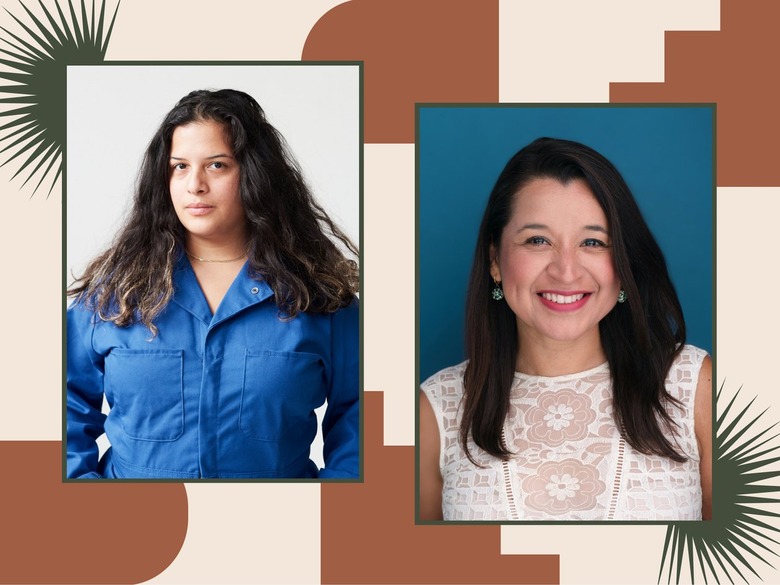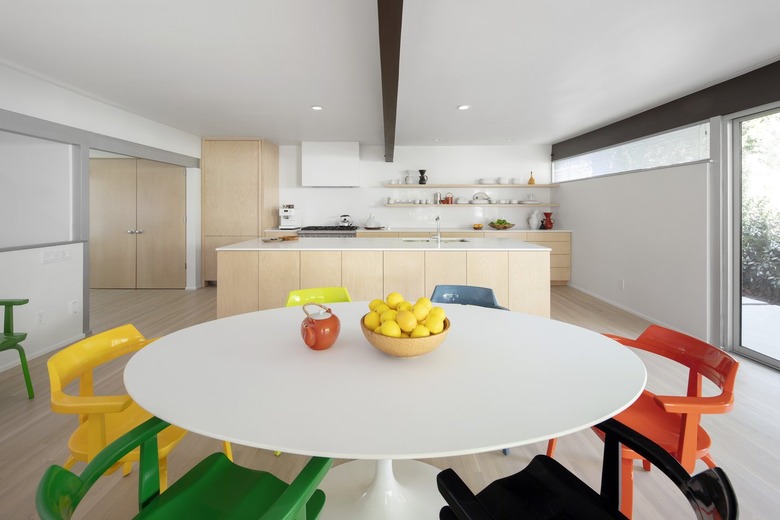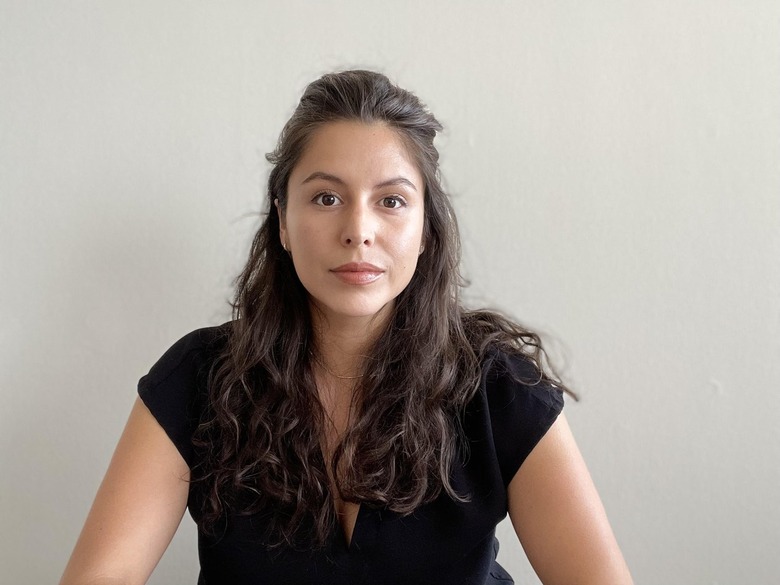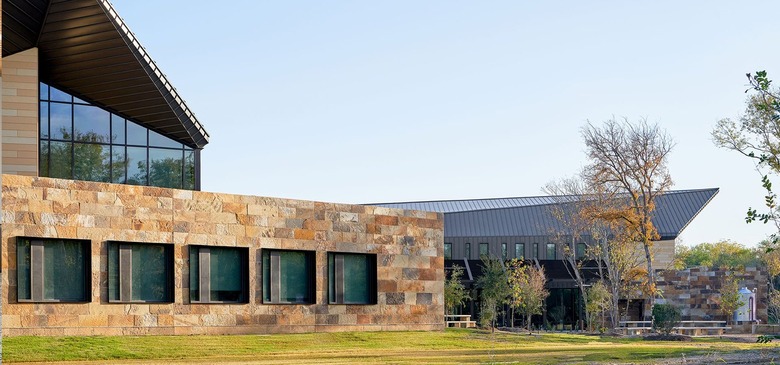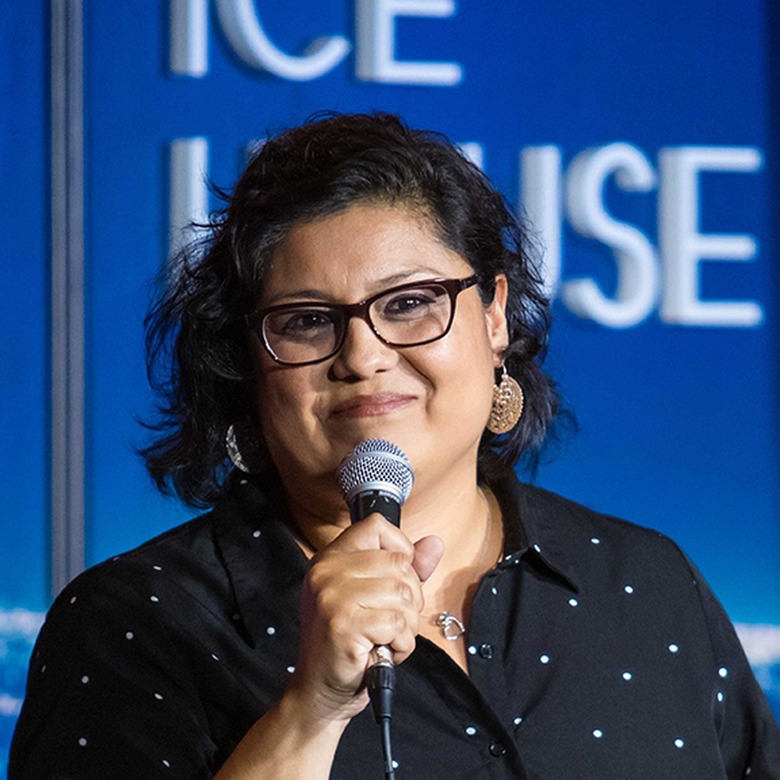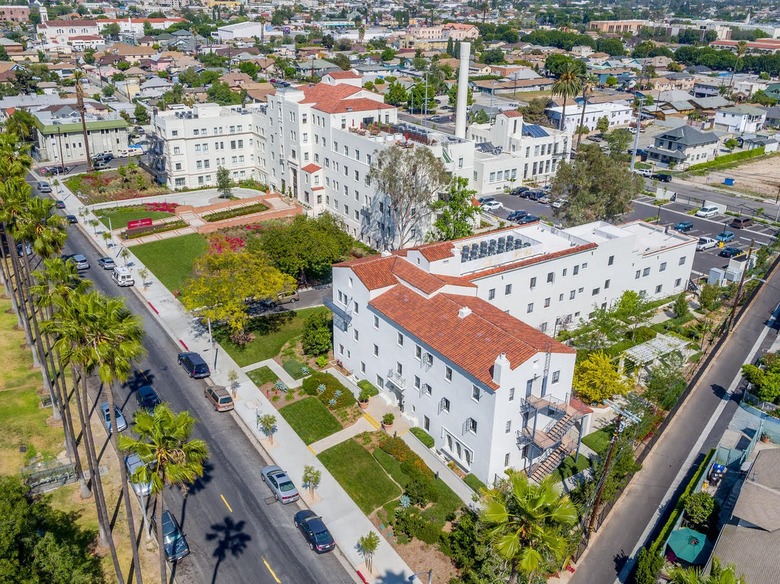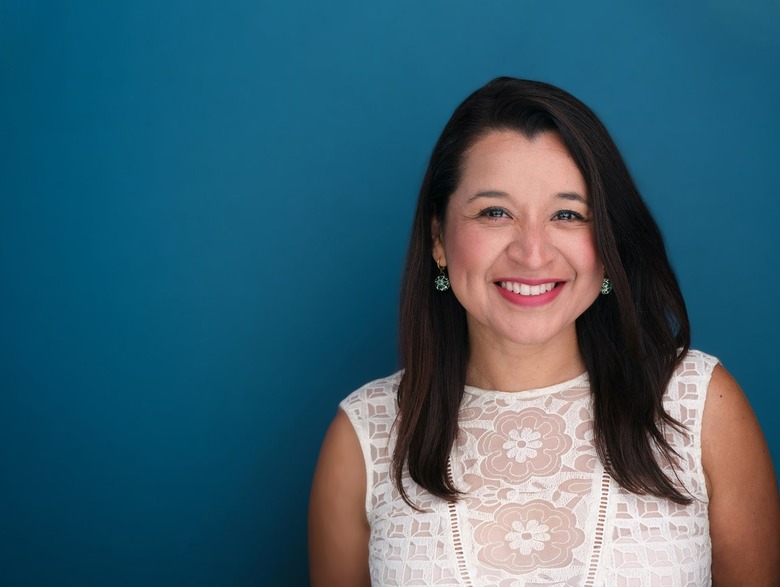5 Latinas In Architecture On Their Career Journeys And What They Hope To See Next
Earlier this year, the New York Times reported that architect Frida Escobedo has been commissioned to design the Metropolitan Museum of Art's modern and contemporary art wing. The New York museum is an institution, and Escobedo described it as a dream commission. However, she was called a "surprising choice" for the job because of her young age (42 years old) — and because she's not someone with a so-called "high-profile" name. But whether it's in museums, residential structures, commercial areas, or community spaces, Latina architects are contributing their skills and visions to the built world around us.
According to the Association of Collegiate Schools of Architecture's director of research and information, Kendall A. Nicholson, Latine architects make up a small percentage of the industry. In a 2020 report, Nicholson specifically shared that Latine people made up 8.7% of architecture faculty and 8.5% of architecture professionals.
The American Institute of Architects (AIA) also reports that out of all the registered architects in the United States, only 17% are women. It seems growth in this area has been slow — two decades ago, in 1999, the percentage was 13.5%. In addition, the National Council of Architectural Registration Boards states that two in five new architects are women — but a 2019 report shows that about 56% of the candidates who completed the Architect Registration Examination (ARE) were men. Latina women, in comparison, made up only 2.4% of candidates who completed the ARE. However, even once these steps for professional advancement are completed, the numbers are still low. Architecture professionals can be part of the AIA before they get their license, but only 5.9% of AIA members are Latine.
In line with Latine Heritage Month, we spoke with five Latinas in the architecture field about their journeys, inspirations, and hopes for the future — especially when it comes to increasing the number of Latinas in the industry. While these conversations happened during a celebratory month, they're also a reminder that Latina architects are hard at work all year round.
Carmen Suero
Carmen Suero
As a teenager living in the Dominican Republic, Carmen Suero quickly learned the impact of architecture. She remembers visiting homes in remote areas that didn't have running water or electricity. The definition of housing was a simple one.
"Some people are so happy with any roof over their heads, and I thought there should be more to it than just that," Suero tells Hunker.
She decided to pursue architecture as a career to try to "give people better housing and better spaces to live out their lives." Suero studied architecture at Florida Atlantic University, where she says she was lucky to have professors and students who shared her background. One architecture professor, she remembers, was focusing on the Afro diaspora in the Caribbean and Europe — a topic no one else at the time was studying. Suero later received her master's degree at the Southern California Institute of Architecture (Sci-Arc).
Like many of the Latinas in architecture we spoke with, Suero keeps busy. She is a principal at the Los Angeles-based architecture firm Good Project Co., and a member of local chapters for the AIA and the National Organization of Minority Architects (NOMA). As part of NOMA, she leads the Latinx in Architecture (LiA) task force, a group that focuses on helping Latinx architects find their voices and places in the industry, as she explains. While she did see people who looked like her during undergrad, that wasn't the case when she entered the workforce.
Suero explains that her work is not just about getting students to graduate, but also about maintaining support as Latinx professionals make their way through the industry. There's a need for helping each other reach more senior positions within architecture firms.
"We can't really try to help [students in architecture] if we're not [also] helping ourselves — [those] who are in the profession — also move forward," says Suero. "So [that] we can be in positions to make a difference."
Siboney Díaz Sánchez
Siboney Díaz Sánchez
While Siboney Díaz Sánchez never saw Latina architects growing up, her mom's activism and her grandparents' work ethic always kept her moving forward. She was the only Latina in her Cornell University program, but soon became a licensed architect and a community engagement administrator for the City of San Antonio's Neighborhood and Housing Services Department. And her work doesn't stop there. She's an empowerment committee co-chair for NOMA and participates in the Design As Protest Planning and Policy Committee.
"That kind of social justice responsibility that architects have — many people see it as a privilege, and I see it as a responsibility," Díaz Sánchez tells Hunker.
The work of people like Yiselle Santos Rivera, principal and global director of justice, equity, diversity, and inclusion at the design firm HKS, has continually motivated her practice. Díaz Sánchez also stresses that mentorship comes in many forms, and that "the hierarchy of age implies that you're not able to learn from younger generations." Working with her students at the Boston Architectural College, where she teaches a course called Community Practice, has enriched her own thinking,
"I also think about the ways in which people who I have met on job sites, who have talked to me about how they are installing something from a plumbing level, have been inspirational, informative, and a part of my professional development," says Díaz Sánchez. "Not just the people who are featured speakers at a symposium."
Her work at NOMA focuses on how to address inequities in the industry through speaking with architects of color who have seen these disparities firsthand. The goal is to create resources for local chapters, so their members have tools to start difficult conversations at their workplaces.
"How are we able to talk about the ways in which structures have very systemically de-prioritized us or excluded us, outside of us just not being enough?" says Díaz Sánchez. "It's not our own deficiency."
Monica Rodriguez
Monica Rodriguez
Monica Rodriguez remembers one particular moment as pivotal to her journey in becoming an architect. After she shared that she was curious about studying architecture, her brother made an appointment at the University of Southern California's architecture school for an informational visit. She was 17 years old, and soon she'd be stepping onto that same campus to get her bachelor's degree in architecture.
Growing up, Rodriguez visited Mexico with her parents during the summer. She says that often, when it rains and the water hits the stone on a building, the smells reminds her of Mexico. She also remembers being in awe of the Vatican the first time she visited — it symbolized the way architecture could create a distinct sense of energy.
Now a licensed architect, Rodriguez is a senior associate at KFA Architecture in Los Angeles. Over the years, her focus turned to affordable housing. "I'd much rather work on those projects that I know are contributing to add much-needed housing [in] Los Angeles, and the areas around Los Angeles, than working on any other type of project," Rodriguez tells Hunker.
Over the course of her career, Rodriguez searched for ways to volunteer and mentor kids from communities of color. She saw kids of immigrants who reminded her of herself while working with organizations like Para Los Niños, a nonprofit organization that offers education and family services. In 2020, she started focusing on diversity efforts at KFA, in the hopes of increasing the number of Black employees at the company. This led to Rodriguez co-developing an architecture program for the Boys & Girls Clubs of Santa Monica focused on BIPOC youth.
"At what point can we go and be an influence to kids, so they can not just study architecture, but [also] consider, 'What am I going to do beyond grade school, beyond high school?'" she says.
The Boys & Girls Club program included activities like making floor plans and designing interiors using small cutouts of furniture pieces. "You're already seeing some kids who are totally getting it," says Rodriguez. "They're designers. It's pretty amazing."
Alicia Ponce
Alicia Ponce
Alicia Ponce has wanted to build things since she was six years old, but it wasn't easy to find support for her dream of becoming an architect. In fact, she remembers being told as a high schooler that she wasn't "going to make it in college." Now a licensed architect, Ponce is the founder and principal of the firm APMonarch. She's also the editor of the anthology Latinas in Architecture: Stories of raising the 1% one Latina at a time, which gathers the stories of 18 "students, professionals, mothers, and business owners," as Ponce writes in the book's introduction.
"You're just trying to make it in school, just like any other student," says Ponce. "You're just trying to learn the material and graduate college and become that architect. But when [Latina architects] talk about our unique challenges, our unique experiences and adversity — how do we surpass that as Latinas in particular?"
The book creates a space for Latinas to tell their own stories about their passion for architecture, as well as their experiences in the professional world. Yanet Garcia, for example, writes that she wouldn't have known Latinas could even be architects without meeting a woman architect at a networking event. For many of the women in the book, there's a turning point when the dream of becoming an architect became a reality.
"We decide to overlook it and just dust ourselves off and continue," says Ponce. "And then I think about those women who are discouraged and do walk away. Those are the ones I want to reach and say, 'You can keep going.'"
Ponce is encouraging mentorship and connection through Arquitina, the nonprofit organization she founded in 2020. The first iteration connected 16 professionals with nine mentees preparing to take the ARE.
APMonarch also focuses on sustainable approaches to architecture, which is something Ponce feels strongly about. "A couple of years into the field, I was really distraught and confused because I thought I was ruining the environment by building all over [the] land," says Ponce. "During that time, I came across the first article [I'd read about] green building and how buildings can coexist with nature ... Architecture is not going to go away. Buildings are not going to stop, but we can make smart decisions and observe nature's systems."
Deborah Garcia
Deborah Garcia
For Deborah Garcia, the trip to Princeton University to start her graduate school studies was a momentous one: it was the longest flight she'd taken in her life, and the beginning of her career. As a junior in high school, she began dreaming of working as an architect, motivated significantly by Sci-Arc's program Design Immersion Days (DID). The summer program, then led by Darin Johnstone, sparked her determination — she attended Sci-Arc as an undergrad and now works as designer, writer, and curator. She's currently a Pietro Belluschi Teaching Fellow at the MIT Department of Architecture. In going through her own career journey, she recognizes that architecture has "been historically oriented as a gentleman's profession," making it difficult for women of color to see themselves in the industry.
"Architecture, as it operates in the United States, has a lot of roots in Western traditions of young men enacting their artistry on the world," Garcia tells Hunker. "That's run through into a lot of the ways that architecture was, for a very long time, run, operated, and created in the world by a very specific demographic. Even when we look at our architecture education today, that's still present. For someone like me — even now, as someone who's teaching in academia and beginning to operate and emerge into the field of architecture — it's still hard to find people who look like me and people who've had the same experience as me."
Through travels to places from Nebraska to Norway, Garcia has continued to deepen her thinking about the links between agricultural systems, natural landscapes, and communities. Her curiosity informs each place she encounters. Studying architecture helped her look more closely and approach each project with a mind open to collecting all the data possible, rather than going in with an agenda. And she sees it as a way to create new futures.
"Architecture has always been a kind of facilitator for imagination ... for the purposes of storytelling or creating narratives that can challenge our world view as it is right now, and, perhaps, maybe open us up to futures that might come," says Garcia. "That really has been my goal, [and it] has emerged from putting myself into those situations where I really have used my tools to not only move through the world ... but imagine other ways the world could be."
